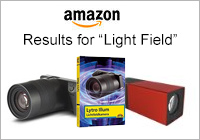Welcome to the LightField Forum!
We believe that there should be a place for LightField photographers and enthusiasts to talk and exchange themselves, and present their favourite LightField pictures.
Please note: In order to prevent forum link spam, all external links are assigned the nofollow attribute!
Welcome GuestShow/Hide Header |
|---|
Welcome Guest, posting in this forum requires registration. |
|
|
Forum » English-Speaking Section » Technical Discussion » Analogue lightfield - possible?
| Pages: 1 |
 Author Author |
Topic: Analogue lightfield - possible? |
|---|
dave.renda- ll newbie Posts: 7 |
|
||||
markus Administrator Posts: 68 |
|
||||
dave.renda- ll newbie Posts: 7 |
|
||||
dave.renda- ll newbie Posts: 7 |
|
||||
dave.renda- ll newbie Posts: 7 |
|
||||
markus Administrator Posts: 68 |
|
||||
dave.renda- ll newbie Posts: 7 |
|
||||
dave.renda- ll newbie Posts: 7 |
|
||||
dave.renda- ll newbie Posts: 7 |
| Pages: 1 |









Recent Comments